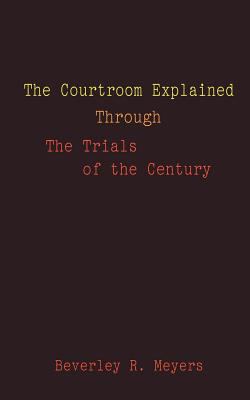
The Courtroom Explained Through the Trials of the Century
ISBN-10: 1588201708
ISBN-13: 9781588201706
$14.95
Book Specs
Trade Paper
1st Book Library
Published on
Nov 15, 2002
Edition
st Edition
Dimensions
5.00x0.65x8.00 Inches
Weight
0.70 Pounds
About the Book
Most of the country was glued to the Internet, observing President Clinton's extramarital affair unfold. Just a few years earlier, riveted to the TV, many watched the LAPD's slow-speed chase of O.J. Simpson. These major cases of the last decade present a tremendous opportunity to learn how the courtroom works. The Courtroom Explained Through the Trials of the Century explains the nuts and bolts of what drove the Paula Jones case, presidential impeachment proceedings, and O.J. Simpson criminal, civil and guardianship actions, once these high-profile cases reached the courtroom. The nuts and bolts are the rules of evidence.
What did President Clinton have in common with O.J. Simpson? Weren't they both the subject of DNA testing? Police found a blood stain on the back gate of Nicole Brown Simpson's condominium that matched Mr. Simpson's DNA, and only one out of 57 billion people had blood that would match that drop. The FBI determined that the semen stain on Monica Lewinsky's blue dress matched President Clinton's DNA, and the DNA markers were considered characteristic of only one out of 7.87 trillion Caucasians. Considering that the world's population reached 6 billion in 1999, this was pretty significant evidence. Monica Lewinsky admitted that she had a sexual relationship with President Clinton in tapes surreptitiously recorded, denied it later in an affidavit, and then admitted the affair before the grand jury and Senate. The President admitted an inappropriate relationship with her, but had in the past denied having sexual relations with her. In the Simpson criminal trial, the judge allowed Detective Mark Fuhrman's use of the "N" word, but the civil judge did not. The Courtroom Explained addresses the rules of evidence raised here.
The amusing examples from these high-profile cases in The Courtroom Explained make traditional principles of evidence easily understandable. Evidentiary questions posed (and answered) include: What are lawyers looking for in jury selection? How does opening statement differ from closing argument? What pitfalls must a witness avoid so he or she won't get "impeached"? How does the judge's role differ from the jurors? What do all of those objections actually mean? What is the point of a deposition before trial? And, what is behind the mystery of expert witnesses?
For those not familiar with the details of these exemplary cases, The Courtroom Explained provides a summary of the evidence and arguments in the Paula Jones action, the impeachment case against President Clinton (including the Starr Report and proceedings before the House Judiciary Committee, House of Representatives, and Senate), and the O.J. Simpson criminal, civil, and guardianship cases.
Be prepared to be entertained, and surprised to learn what really makes a courtroom work.
